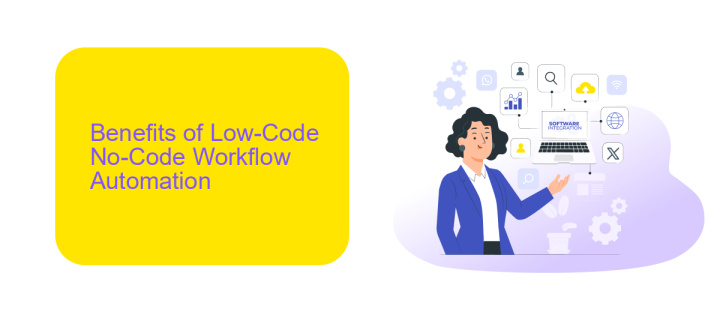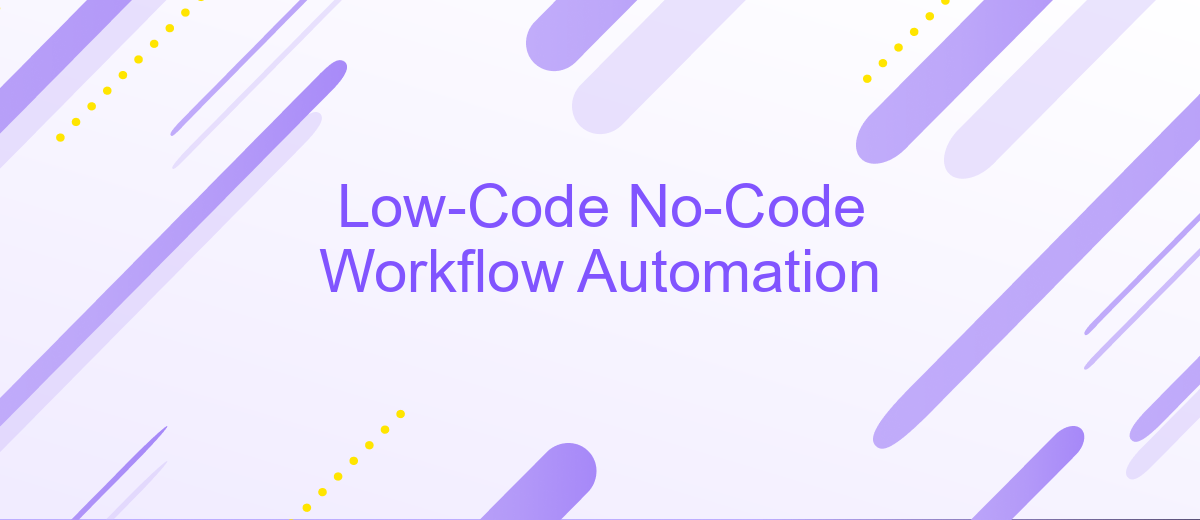Low-Code No-Code Workflow Automation
In today's fast-paced digital landscape, businesses are increasingly turning to low-code and no-code platforms to streamline their workflow automation. These innovative tools empower users of all technical backgrounds to design, implement, and manage complex processes with minimal coding effort. As a result, organizations can enhance productivity, reduce costs, and accelerate their digital transformation initiatives.
What is Low-Code No-Code Workflow Automation?
Low-Code No-Code Workflow Automation refers to the use of platforms and tools that allow users to create automated workflows without extensive coding knowledge. These platforms provide visual interfaces and pre-built templates, making it easier for non-developers to design, implement, and manage workflows efficiently.
- Drag-and-drop interfaces for easy workflow design
- Pre-built templates for common business processes
- Integration with various applications and services
- Real-time monitoring and analytics
One such service that facilitates integration is ApiX-Drive. It allows users to connect different applications and automate data transfer between them without writing any code. This streamlines business processes, reduces manual errors, and saves time, making workflow automation accessible to everyone, regardless of technical expertise.
Benefits of Low-Code No-Code Workflow Automation

Low-Code No-Code Workflow Automation offers numerous benefits, making it an attractive solution for businesses of all sizes. One of the primary advantages is the significant reduction in development time and costs. By enabling users to create and modify applications without extensive coding knowledge, companies can quickly adapt to changing market demands and streamline their operations. This approach also minimizes the reliance on specialized IT staff, allowing non-technical employees to participate in the automation process, fostering innovation and collaboration across departments.
Another key benefit is the ease of integration with existing systems and services. Platforms like ApiX-Drive facilitate seamless connectivity between various applications, ensuring a smooth data flow and enhancing overall efficiency. This capability allows businesses to automate complex workflows, reduce manual errors, and improve data accuracy. Additionally, the flexibility of Low-Code No-Code solutions enables organizations to scale their operations effortlessly, accommodating growth and evolving business needs without significant disruptions.
How to Choose the Right Low-Code No-Code Workflow Automation

Choosing the right low-code no-code workflow automation tool can significantly impact your business efficiency and productivity. It's essential to consider several factors to make an informed decision.
- Identify Your Needs: Determine the specific workflows and processes you aim to automate. This helps in selecting a tool that aligns with your requirements.
- Ease of Use: Opt for a platform with an intuitive interface that allows non-technical users to create and manage workflows effortlessly.
- Integration Capabilities: Ensure the tool can integrate seamlessly with your existing systems and applications. For instance, ApiX-Drive offers robust integration features that can connect various services without coding.
- Scalability: Choose a solution that can grow with your business, accommodating increasing complexity and volume of workflows.
- Support and Community: A platform with strong customer support and an active user community can provide valuable assistance and resources.
By carefully evaluating these aspects, you can select a low-code no-code workflow automation tool that enhances your operational efficiency and drives business growth.
Best Practices for Using Low-Code No-Code Workflow Automation

Implementing low-code no-code workflow automation can significantly streamline your business processes, but it's essential to follow best practices to maximize its benefits. Start by clearly defining your objectives and understanding which tasks can be automated. This will help you choose the right tools and platforms that align with your goals.
Ensure that your team receives adequate training on the chosen low-code no-code platforms. Familiarity with the tools will enable them to build and manage workflows effectively. Additionally, always keep an eye on the scalability and flexibility of the solutions you implement to accommodate future growth and changes.
- Define clear objectives and identify tasks for automation
- Choose the right tools and platforms that align with your goals
- Provide adequate training to your team
- Monitor scalability and flexibility of the solutions
- Regularly review and optimize workflows for efficiency
For seamless integration of various applications and services, consider using tools like ApiX-Drive. This platform simplifies the process of connecting different software solutions, ensuring that your automated workflows function smoothly. By adhering to these best practices, you can effectively leverage low-code no-code automation to enhance your business operations.
- Automate the work of an online store or landing
- Empower through integration
- Don't spend money on programmers and integrators
- Save time by automating routine tasks
Future Trends in Low-Code No-Code Workflow Automation
The future of Low-Code No-Code workflow automation is poised to be transformative, driven by advancements in artificial intelligence and machine learning. These technologies will enable platforms to offer more intelligent automation solutions, predicting and optimizing workflows with minimal human intervention. Enhanced user interfaces and more intuitive design tools will further democratize the creation of complex workflows, allowing even non-technical users to build robust automation systems effortlessly.
Integration capabilities will also see significant improvements, with services like ApiX-Drive leading the way in simplifying the connection between various applications and systems. This will allow businesses to create seamless, end-to-end automated processes without the need for extensive coding knowledge. As more organizations adopt these technologies, we can expect a surge in productivity and efficiency, paving the way for innovative business models and operational strategies.
FAQ
What is Low-Code No-Code Workflow Automation?
What are the benefits of using Low-Code No-Code platforms for workflow automation?
Can Low-Code No-Code platforms integrate with existing systems and applications?
What types of tasks can be automated using Low-Code No-Code platforms?
How do I get started with Low-Code No-Code Workflow Automation?
Strive to take your business to the next level, achieve your goals faster and more efficiently? Apix-Drive is your reliable assistant for these tasks. An online service and application connector will help you automate key business processes and get rid of the routine. You and your employees will free up time for important core tasks. Try Apix-Drive features for free to see the effectiveness of the online connector for yourself.


